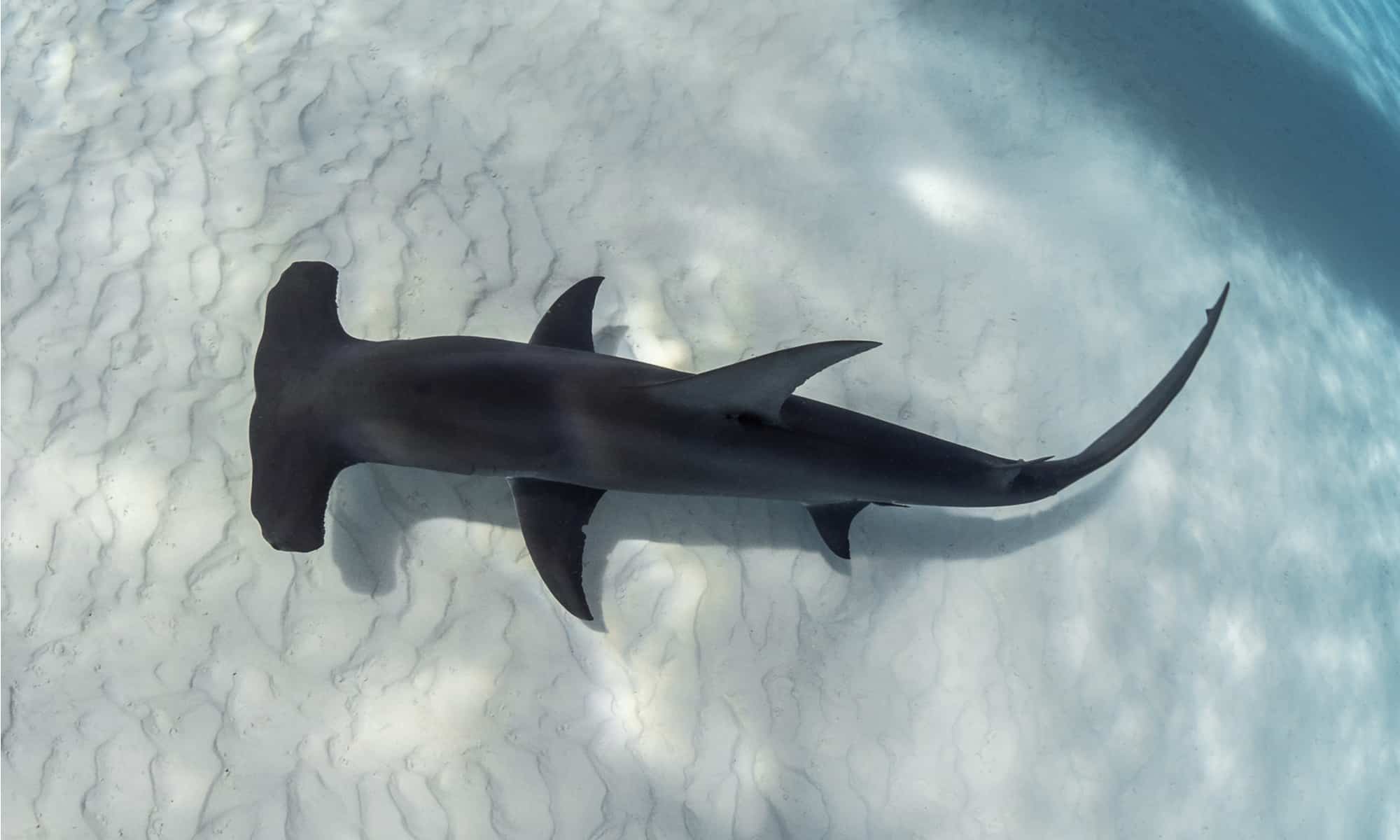Continue reading for our analysis...

Animal migrations are always impressive. The sight of a large group of animals traveling as one is both beautiful and awe-inspiring. In the below clip, we get to see thousands of blacktip sharks that have traveled to Florida and have congregated very close to the beach. They range from around 60 to 80 pounds (and around six feet in length) and have attracted a predator – the hammerhead shark.
Hammerheads are much larger – the one in this clip is around 14 feet and weighs over 1000 pounds – ten times that of the blacktip sharks. We can see the blacktips trying to evade the predator by heading into shallow water. It didn’t end well for one blacktip shark.
Where Do Blacktip Sharks Live?

Blacktip sharks prefer shallow, coastal waters.
©iStock.com/Aleksandr Golubev
The blacktip shark (Carcharhinus limbatus) belongs to the Carcharhinidae shark family. They are one of the most commonly encountered sharks and are identified by the black tips on their pectoral fins, the second dorsal fin, and the lower lobe of the caudal fin. However, not all of them have black tips at all. What they do all have are grayish-brown bodies and paler bellies.
You can come across them in tropical and subtropical waters all over the world. That includes the edges of the Indian Ocean from South Africa to Southeast Asia. Also, the western Pacific (from Japan to northern Australia).
They can be seen migrating in huge schools in waters off the US. This species is generally found in shallow, coastal waters – typically less than 100 feet below the surface. Because this is also where humans like to enjoy the water, we often encounter this type of shark. However, they have also been spotted in estuaries (only the high-salinity areas near the sea) and depths of up to 200 feet. By giving birth in estuaries they can protect the young sharks from predator sharks that patrol the deeper waters.
Blacktip Shark Migrations in US Waters

Blacktip
reef shark
feeds in shallow waters.
©iStock.com/RuthBlack
Blacktips migrate along coasts and do not stray into the open ocean. The migrations are thought to be driven by ocean temperatures and the movement of their prey. Their primary prey species include Atlantic menhaden, striped mullet, spot, and Atlantic croaker. They also eat smaller coastal sharks and cownose rays. Tracking the blacktip sharks’ movements may show evidence for climate-driven range shifts.
Springtime sees them move northward through North Carolina and Virginia waters. They have been documented as far north as Long Island during warmer-than-average summers. Then in the fall, they return to southern Florida and Caribbean waters. It’s a privilege to see nature from this unique angle, as huge schools of migrating blacktip sharks have been photographed from the air.
Thank you for reading! Have some feedback for us? Contact the AZ Animals editorial team.







